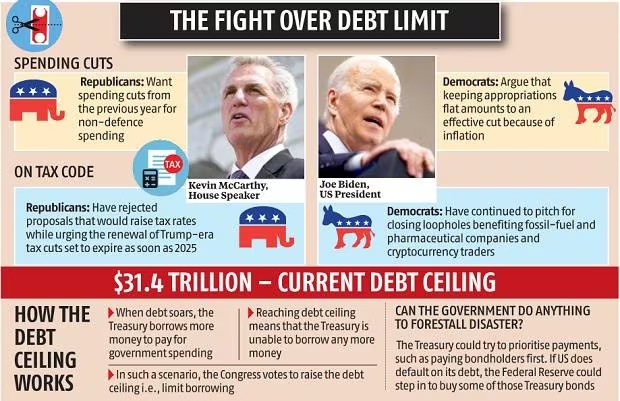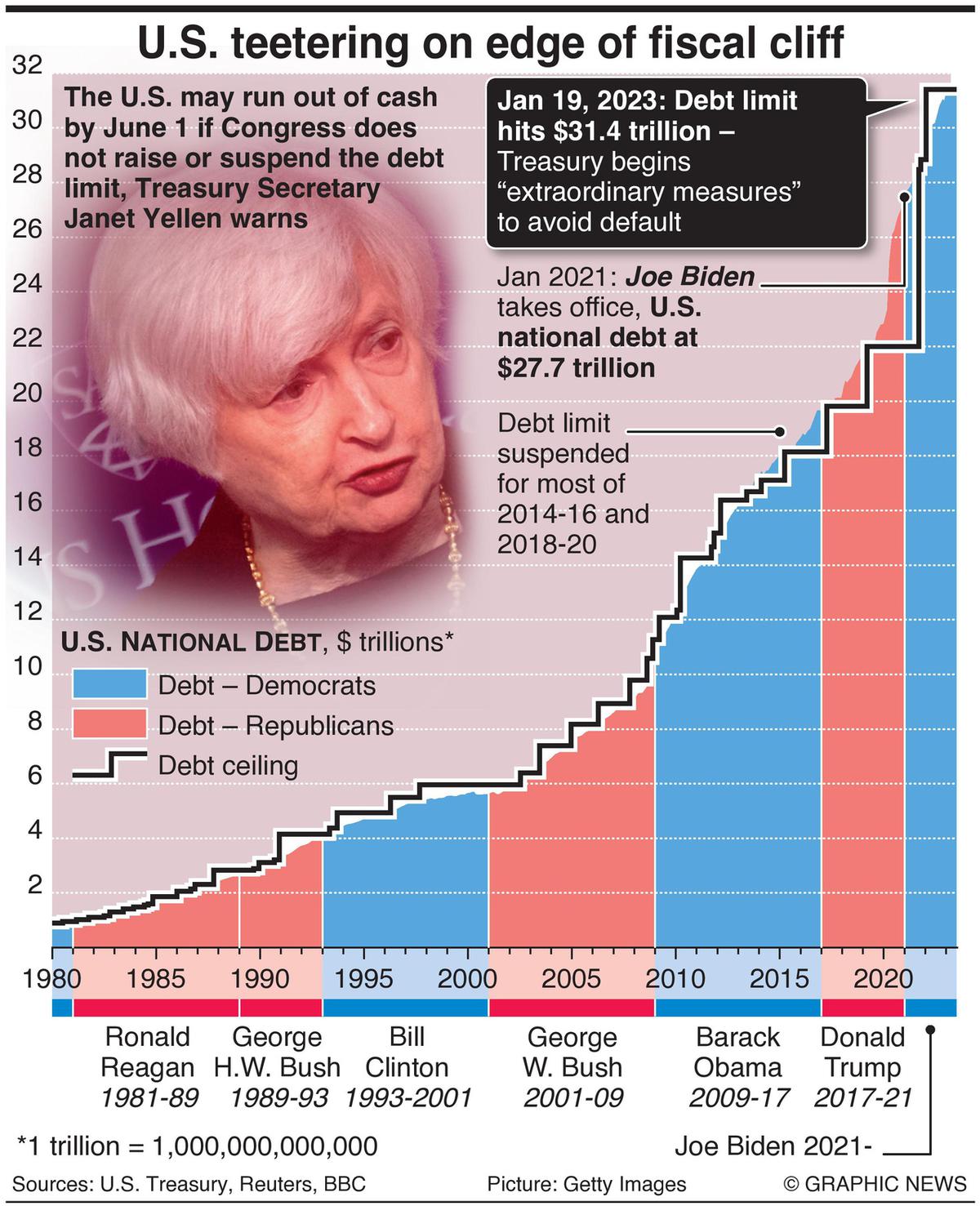900 319 0030
enquiry@shankarias.in
The US government could default on its borrowings, an unprecedented situation that could potentially hit economies worldwide, if Congress doesn’t raise the nation’s debt ceiling.

